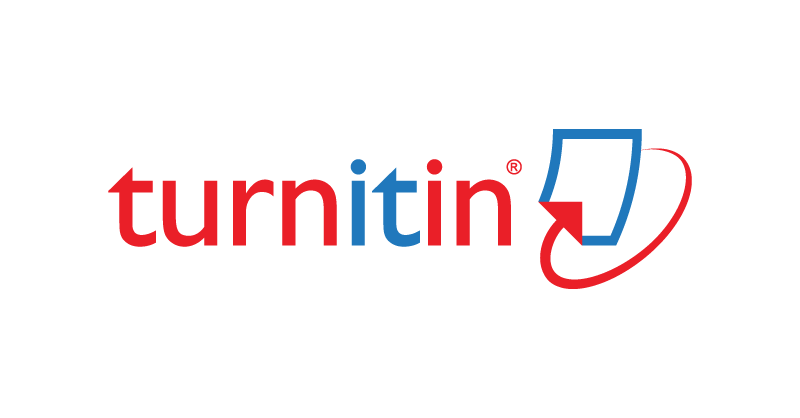Optimalisasi kondisi aktivasi arang bonggol jagung sebagai desikan menggunakan metode Taguchi
Abstract
Keywords
Full Text:
PDF (Bahasa Indonesia)References
Abdullah, N. H., N. A. A. Ghani, M. K. A. A. Razab, A. M. Noor, A. Z. A. Halim, M. S. M. Rasat, K. N. S. W. S. Wong, and M. F. M. Amin. 2019. Methyl orange adsorption from aqueous solution by corn cob based activated carbon. AIP Conference Proceedings 2068:020036.
Bag, O., K. Tekin, and S. Karagoz. 2020. Microporous activated carbons from lignocellulosic biomass by KOH activation. Fullerenes, Nanotubes and Carbon Nanostructures 28:1030–1037.
Biedermann, M., R. Schum, and K. Grob. 2018. Activated carbon added to recycled paperboard to prevent migration into food: approach for determining efficacy, and first results. Food Additives & Contaminants: Part A 35:1832–1844.
Canteli, A. M. D., D. Carpiné, A. de P. Scheer, M. R. Mafra, and L. Igarashi-Mafra. 2014. Fixed-bed column adsorption of the coffee aroma compound benzaldehyde from aqueous solution onto granular activated carbon from coconut husk. LWT - Food Science and Technology 59:1025–1032.
Chairunnisa, F. Miksik, T. Miyazaki, K. Thu, J. Miyawaki, K. Nakabayashi, A. T. Wijayanta, and F. Rahmawati. 2021. Development of biomass based-activated carbon for adsorption dehumidification. Energy Reports 7:5871–5884.
Doczekalska, B., M. Bartkowiak, H. Łopatka, and M. Zborowska. 2022. Activated carbon prepared from corn biomass by chemical activation with potassium hydroxide. BioResources 17:1794–1804.
FAOSTAT. 2022. Crops and livestock products. https://www.fao.org/faostat/en/#data/QCL.
Heidarinejad, Z., M. H. Dehghani, M. Heidari, G. Javedan, I. Ali, and M. Sillanpää. 2020. Methods for preparation and activation of activated carbon: a review. Environmental Chemistry Letters 18:393–415.
Hui, T. S., and M. A. A. Zaini. 2015. Potassium hydroxide activation of activated carbon: a commentary. Carbon letters 16:275–280.
Jatmiko, T. H. 2020. Optimization of Production Activated Carbon for Removal of Pharmaceuticals Waste Using Taguchi Method and Grey Relational Analysis. Jurnal Riset Teknologi Pencegahan Pencemaran Industri 11:11–18.
Kandala, A. V. U. K., D. G. Solomon, and J. J. Arulraj. 2022. Advantages of Taguchi Method compared to Response Surface Methodology for achieving the Best Surface Finish in Wire Electrical Discharge Machining (WEDM). Journal of Mechanical Engineering 19:185–199.
Kaźmierczak, J., P. Nowicki, and R. Pietrzak. 2013. Sorption properties of activated carbons obtained from corn cobs by chemical and physical activation. Adsorption 19:273–281.
Li, S., X. Tan, H. Li, Y. Gao, Q. Wang, G. Li, and M. Guo. 2022. Investigation on pore structure regulation of activated carbon derived from sargassum and its application in supercapacitor. Scientific Reports 12:10106.
Miller, W. M. 1983. Energy storage via desiccants for food/agricultural applications. Energy in Agriculture 2:341–354.
Minh Dat, N., L. Minh Huong, N. Tien Dat, D. Ba Thinh, D. Ngoc Trinh, N. Thi Huong Giang, M. Thanh Phong, and N. Huu Hieu. 2022. Synthesis of hygroscopic sodium alginate-modified graphene oxide: Kinetic, isotherm, and thermodynamic study. European Polymer Journal 174:111333.
Miranda, M. T., F. J. Sepúlveda, J. I. Arranz, I. Montero, and C. V. Rojas. 2018. Analysis of pelletizing from corn cob waste. Journal of Environmental Management 228:303–311.
Roy, R. K. 2010. A primer on the Taguchi method. 2nd ed. Society of Manufacturing Engineers, Dearborn, MI.
Rudd, A. 2014. Measure Guideline: Supplemental Dehumidification in Warm-Humid Climates.
Scholz, M. 2023. How Activated Carbon Can Help You—Processes, Properties and Technological Applications. Technologies 11:153.
Singh, R., and J. S. Dureja. 2014. Comparing Taguchi Method and RSM for Optimizing Flank Wear and Surface Roughness During Hard Turning of AISI D3 Steel. Pages 139–152 in S. S. Khangura, P. Singh, H. Singh, and G. S. Brar, editors. Proceedings of the International Conference on Research and Innovations in Mechanical Engineering. Springer India, New Delhi.
Sultana, R., K. Kunusoth, L. Amineni, P. Dahal, and K. J. Bradford. 2021. Desiccant drying prior to hermetic storage extends viability and reduces bruchid (Callosobruchus chinensis L.) infestation of mung bean (Vigna radiata (L.) R. Wilczek) seeds. Journal of Stored Products Research 94:101888.
Sun, S., Q. Yu, M. Li, H. Zhao, and C. Wu. 2019. Preparation of coffee-shell activated carbon and its application for water vapor adsorption. Renewable Energy 142:11–19.
Surra, E., R. P. P. L. Ribeiro, T. Santos, M. Bernardo, J. P. B. Mota, N. Lapa, and I. A. A. C. Esteves. 2022. Evaluation of activated carbons produced from Maize Cob Waste for adsorption-based CO2 separation and biogas upgrading. Journal of Environmental Chemical Engineering 10:107065.
Tang, K.-Z., K.-K. Tan, and T.-H. Lee. 2016. Taguchi Method Using Intelligent Techniques. Pages 389–419 in C. Kahraman and S. Yanik, editors. Intelligent Decision Making in Quality Management. Springer International Publishing, Cham.
Thoruwa, T. F. N., C. M. Johnstone, A. D. Grant, and J. E. Smith. 2000. Novel, low cost CaCl2 based desiccants for solar crop drying applications. Renewable Energy 19:513–520.
Vishnu Vardhan, M., G. Sankaraiah, M. Yohan, and H. Jeevan Rao. 2017. Optimization of Parameters in CNC milling of P20 steel using Response Surface methodology and Taguchi Method. Materials Today: Proceedings 4:9163–9169.
Wang, F., F. Zheng, J. Jiang, Y. Li, Y. Luo, K. Chen, J. Du, Y. Huang, Q. Li, and H. Wang. 2021. Microwave-Assisted Preparation of Hierarchical N and O Co-Doped Corn-Cob-Derived Activated Carbon for a High-Performance Supercapacitor. Energy & Fuels 35:8334–8344.
World Food and Agriculture – Statistical Yearbook 2021. 2021. . FAO.
Xie, L., S. Liu, and J. Mao. 2024. Effect of activated carbon filtration on the quality of Huangjiu. Food and Fermentation Industries 50:31–36.
Yang, H. M., D. H. Zhang, Y. Chen, M. J. Ran, and J. C. Gu. 2017. Study on the application of KOH to produce activated carbon to realize the utilization of distiller’s grains. IOP Conference Series: Earth and Environmental Science 69:012051.
DOI
https://doi.org/10.21107/agrointek.v19i3.22878Metrics
Refbacks
- There are currently no refbacks.
Copyright (c) 2025 Tri Hadi Jatmiko

This work is licensed under a Creative Commons Attribution 4.0 International License.

